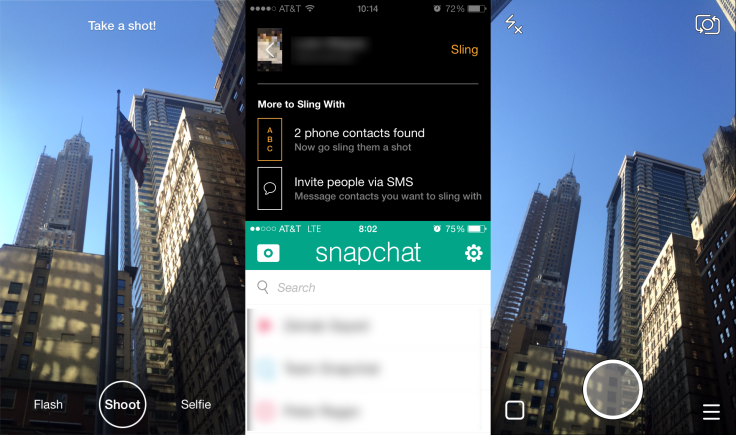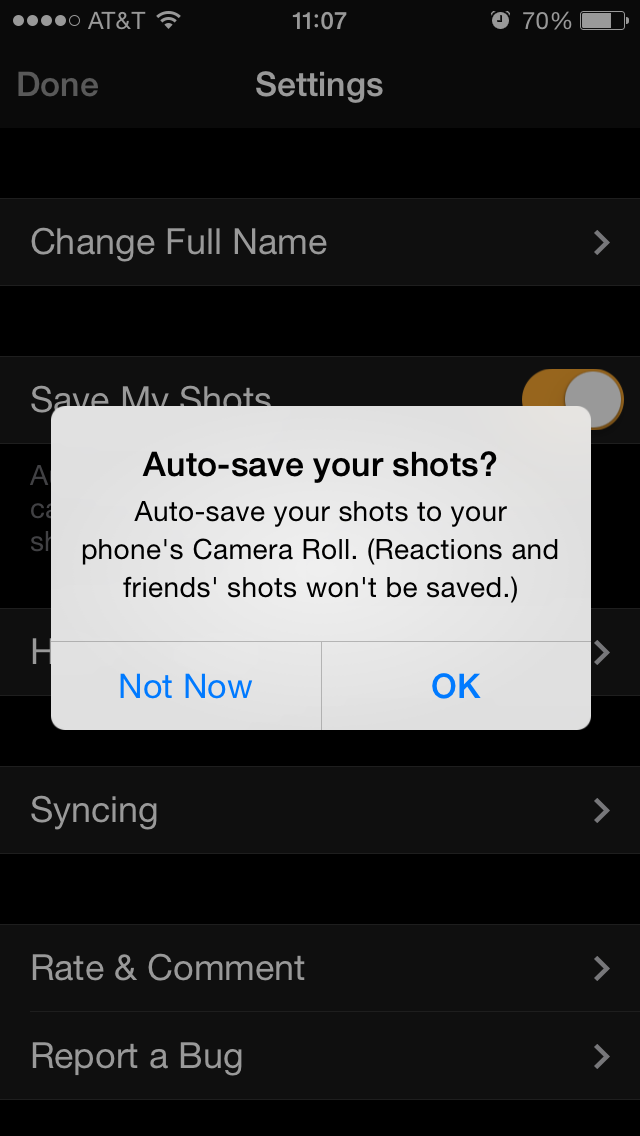Slingshot Vs. Snapchat: 5 Differences Between The Self-Destructing Messaging Apps

Facebook Inc.’s (NASDAQ:FB) Creative Labs is trying its hand again at photo and video mobile messaging with a new app called Slingshot.
Appealing to fans of apps such as the popular Snapchat, Facebook created Slingshot as a new take on mobile messaging apps with “self-destructing” messages. The social media giant last year launched but then soon after abandoned a similar app called “Facebook Poke,” by all accounts a carbon copy of Snapchat’s popular service.
Upon Slingshot's release, the new app was compared to Snapchat, which Facebook attempted to purchase for $3 billion last November. And while there are several similarities between the two services, Slingshot does have some key differences.
Slinging a Message Back
With Snapchat, users can receive as many messages as they want without needing to send a reply. Slingshot attempts to balance that out a bit by forcing users to reply to a message in order to view a received image or video.
While Slingshot's feature is intended to encourage more people to participate in a conversation, one critic from Business Insider has noted that the reply mechanism often devolves into users replying with mundane photos in order to see an image.
Reaction Shots
There is a way to prevent an endless loop of images. After sending an image, the image you just received becomes visible. Instead of having to send a whole message to react to the shot received on Slingshot, you can send your own reaction shot, which doesn’t require a recipient to send back another message to view your response.
Saving Images

Images created in Slingshot can also be saved on your own device, via toggling an option in the settings menu. This feature doesn’t save images received, but that doesn’t stop you from saving those images manually.
Destruction of Messages
Images self-destruct only after you swipe away or reply to a message on Slingshot, whereas in Snapchat, users can set a timer to customize how long someone can view an image.
Slingshot also doesn’t have a feature that notifies an image sender if his or her message was screenshotted by a recipient, unlike SnapChat, which instantly notifies the user when a screenshot is taken of a Snapchat message.
“Nobody” Is Really on Slingshot
Slingshot has been available on Apple Inc.’s (NASDAQ:AAPL) App Store and Google Inc.’s (NASDAQ:GOOG) Play Store for less than 24 hours, so there aren't many people to “sling” to yet. In initial tests, International Business Times found only a handful of users on the Slingshot app as of Wednesday. Meanwhile, in Snapchat, a quick scan of the user's address book can quickly find a number of people on the app at the time.
To download Slingshot, visit the official website, or go to the Google Play Store or the Apple App Store.
© Copyright IBTimes 2024. All rights reserved.






















